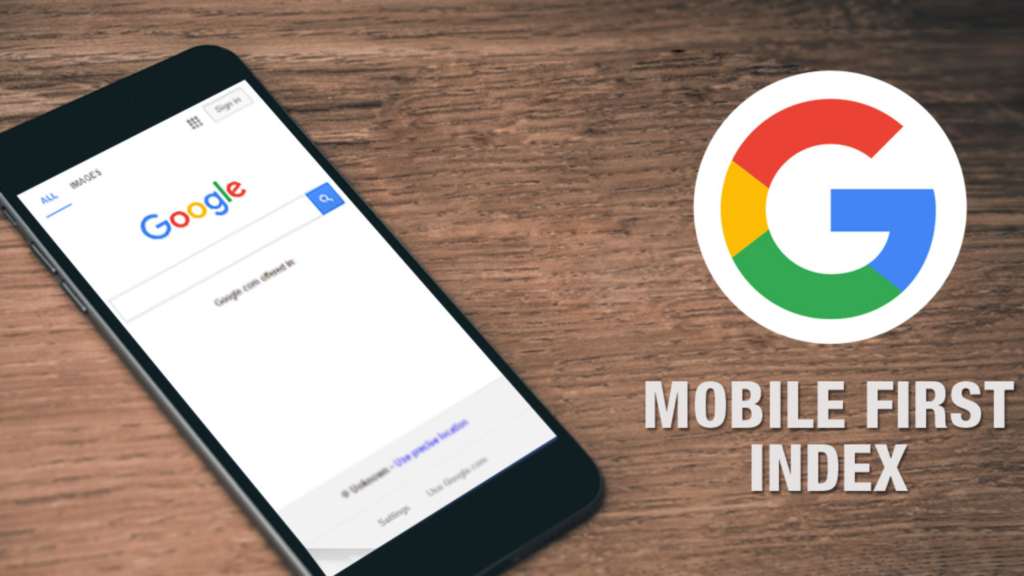The March 2019 Core Update is all about your content, so it better be good and it better be what people are searching for. If not, Google doesn’t care – keywords alone won’t save you.
The Daily Mail’s online news portal, Mail Online, has reportedly lost 50% of its traffic following the March 2019 Core Update to Google’s search algorithm. This information comes from a post addressed to Google by Jesus Mendez, Mail Online’s SEO Director.
In his statement, Mendez noted, “The day after the broad core algorithm update (June 3rd) we saw a massive drop in search traffic from Google (lost 50% of daily traffic).”
According to Sistrix Visibility Index data, the Daily Mail’s popular website, Mail Online, saw a significant decline in its Google search visibility. Between May 29th and June 5th, their visibility dropped by a staggering 43%.
Overview
On March 13, 2019, Google confirmed a significant core algorithm update via a tweet from Danny Sullivan. This update, initially dubbed “Florida 2” by the marketing community due to its timing near the Pubcon conference, was later officially named the “March 2019 Core Update” by Sullivan to avoid confusion.
While some speculated the update reversed changes made during the 2018 Google Medic update, impacting health and wellness websites, data suggests otherwise.
The March 2019 Core Update appears to be an independent effort focused on rewarding websites that prioritize user experience. This is evidenced by the traffic resurgence experienced by sites previously penalized in earlier updates.
While some newspapers saw their visibility plummet, others like The Mirror, The Sun, and Metro experienced significant increases of 54% and 27% respectively, as shown below.
This begs the question: Why are online news websites faring so differently? Answering this could shed light on how Google’s latest algorithm update might impact your content and SEO strategy.
Taking a closer look at their front pages, captured as screenshots at the same time, reveals some potential insights.
What Happened with This Update
While Google often keeps mum on the specifics of algorithm updates, the SEO community is adept at deciphering their impact through research and data analysis. Today, we delve into the March 2019 Core Update, examining its influence and the websites it affected.
Leveraging over 1.7 million search results, data analytics tools like AHrefs and Scrapebox, and a robust sample of 58 Google Analytics accounts, Eric Lancheres from Traffic Research conducted a comprehensive study to assess the update’s impact. His findings shed light on key trends and provide valuable insights for site owners and SEO professionals.
Word Counts and Title Tags Not Impacted
Analyzing keyword usage and word count in top-ranking articles and web page titles revealed no significant changes after the update, suggesting these on-page factors remained unaffected.
User Experience Appears to Have an Impact
While many sites affected by the Medic update saw partial traffic recovery, a select few achieved full restoration. This suggests Google may now be prioritizing user experience over excessive keyword optimization. Sites with informative content, a positive user experience, and faster page load speeds appeared to experience better recovery outcomes, regardless of keyword saturation in navigation or content. This indicates that Google may be willing to overlook over-optimization if user satisfaction remains high.
Excessive Pop-Ups, Ads, and Large Overlays
The Traffic Research study revealed a decline in search traffic for websites employing excessive advertising and pop-ups after the recent update. This decline can be attributed to the detrimental impact such elements have on user experience.
Additionally, bulky drop-down menus, prevalent on certain e-commerce platforms, hinder user experience by obstructing content and triggering accidental activation, further contributing to potential traffic loss.
Low-Quality Content
This update seems to have also led to a decline in traffic for sites filled with low-quality content. Previously, publishers could easily churn out such content, often relying on cheap writers to research and create it quickly and cheaply. This update suggests that Google may now be considering additional factors like bounce rate and dwell time to determine the quality of content, making it harder for low-quality content to rank well.
Sub-Domains
It’s crucial to remember that subdomains can experience a decline in traffic even while the main domain remains stable. This can happen if the content or user experience on the subdomain is subpar. For instance, if your blog resides on a subdomain and its content or user experience are lacking, then that specific subdomain might witness a drop in traffic, while the main domain maintains its usual level of traffic.
Backlinks
While the recent update didn’t directly penalize linking practices, a noteworthy shift occurred in the link landscape. First, the total number of links to pages ranking on the first page of Google decreased, despite the overall linking power remaining stable. This suggests that acquiring high-authority backlinks carries more weight than accumulating numerous low-authority links.
Furthermore, an interesting trend emerged regarding backlinks from government websites. These links increased by nearly 2.5x for first-page ranking pages, whereas backlinks from educational websites slightly decreased. This could indicate that Google might be prioritizing backlinks from .gov domains, potentially due to their perceived difficulty in acquisition.
Jeff Coyle, from Market Muse, conducted his own data analysis, providing valuable insights for content marketers.
Splitting Large Sites into Multiple Domains
Previously, re-launching content by migrating articles to separate domains was an effective strategy for websites experiencing traffic declines due to algorithm updates. This tactic enjoyed success for approximately a year and a half. However, recent updates appear to have identified this approach, leading to a reduction in traffic for such sites.
Long-Form Content
The popularity of long-form list posts has surged in recent years, fueled by studies suggesting their superior search engine performance. However, questions remain about the actual impact of excessive content length on user engagement and ranking.
MarketMuse conducted a study analyzing search traffic to long-form list posts, exploring their effectiveness. While some articles observed a traffic boost, others faced a decline, highlighting the inconclusive nature of the data.
Jeff, speculating on the results, suggested that articles experiencing traffic gains might have benefited from backlinks from authoritative sites, counteracting any potential penalty from recent algorithm updates.
This study, though inconclusive, emphasizes the need for further investigation into the intricate relationship between list post length, user engagement, and search engine ranking. Further research will shed light on the optimal length for maximizing content effectiveness and ensure your list posts reach their full potential.
Publishing Consistently and Creating New Content
Maintaining consistent content creation emerged as a key factor in weathering the storm of the recent update. Regularly publishing fresh content fosters reader engagement, sending positive signals to Google in the form of increased website visits, social shares, comments, and even backlinks.
This strategy proved particularly beneficial for publishers who previously relied on republishing old articles without significant updates. In the wake of this update, the effectiveness of this approach appears significantly diminished, making consistent creation of high-quality content a crucial element of post-update success.
Action Steps
While Google keeps the details of their algorithm updates under wraps, astute marketers have gleaned valuable insights into their effects on various websites. Based on these observations, here are some actionable steps you can take to ensure your website thrives in the wake of the latest Google update:
- Focus on Creating a Good User Experience on Your Website
While links and on-page SEO remain crucial, prioritizing a fantastic user experience (UX) has become paramount in light of Google’s March 2019 Update. This means minimizing intrusive pop-ups and ads, even on affiliate websites.
Focus on user engagement by optimizing metrics like bounce rate, time on site, and pages visited. Eliminate any element that might cause users to abandon your site in search of a better Google result, including slow loading times and confusing navigation. By prioritizing UX, you’ll be well-positioned for continued success in the ever-evolving SEO landscape.
- Focus on Getting More High-Quality Links Instead of Focusing on Quantity
While mass email outreach for link building remains a popular tactic, focusing on acquiring fewer, high-authority links could prove more strategic. Securing links from trusted .gov websites, in particular, can offer significant boosts in search engine rankings. This shift in focus prioritizes quality over quantity, aligning with Google’s evolving algorithms and emphasizing the value of authoritative endorsements.
- Focus on Creating Quality Content Consistently and Updating Old Content
While content creators understand the importance of consistent publishing, many struggle to maintain a regular schedule due to limited time and resources. Following Google’s March 2019 update, content consistency appears more critical than ever.
Regularly refreshing old content to keep it relevant and engaging, while consistently creating new and valuable content, is crucial for audience retention. Prioritizing high-quality content creation is essential.
Google seems to be penalizing tactics like mass-producing low-quality content for SEO purposes or creating long-winded lists that lack actual value for readers. Remember, quality over quantity is the key to success in the current content landscape.
- Avoid Splitting Old Underperforming Sites into Separate Domains
Some marketers are constantly seeking shortcuts and quick fixes to improve their SEO rankings. However, Google’s algorithms are constantly evolving to identify and penalize manipulative tactics. In the recent update, splitting old sites into multiple domains and republishing the content appears to be ineffective.
This highlights the importance of focusing on long-term strategies such as creating high-quality content and regularly updating existing content to enhance its relevance and appeal.
5. Optimize Title Tags to Improve Click-through Rates
One powerful signal to Google for judging the relevance and appeal of search results is user click-through behavior. By experimenting with various title tags, you can optimize them to entice users to click on your link instead of the competition.
Final Thoughts
Google’s latest update highlights the growing importance of user experience (UX) in website ranking. While backlinks and on-page factors remain relevant, prioritizing high-quality content and user-friendliness is now crucial for SEO success.
What have you observed from your end? Share your thoughts and experiences in the comments below!



